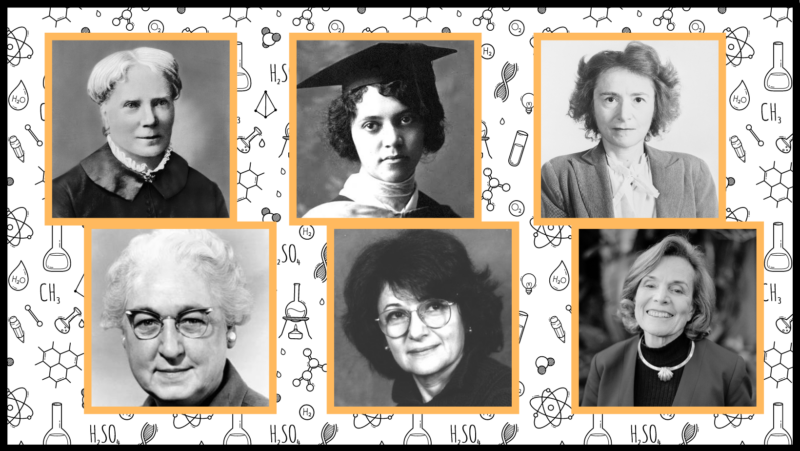Insights
Women in Math: Pioneers in Biology and Medicine
“My whole life is devoted unreservedly to the service of my sex. The study and practice of medicine is in my thought but one means to a great end…the true ennoblement of woman.” – Elizabeth Blackwell, first US female physician
For centuries, women have cared for the sick and aided in childbirth, whether it be for their own families or helping as nurses. Many advances in biology and medicine are thanks to amazing women, like Elizabeth Blackwell, who are pioneers in these fields. These are some of their accomplishments:
Elizabeth Blackwell (1821-1910): First woman to earn a medical degree in the US
Every woman doctor can thank Elizabeth Blackwell for her determination in pioneering the way for women to earn medical degrees. The Association of American Medical Colleges (AAMC) shares a brief history of this incredible woman. “Before being accepted to medical school, Elizabeth Blackwell, MD, was rejected by more than 10 schools for men—no schools for women yet existed—and she refused a mentor’s suggestion that she disguise herself as a man to gain admittance. Blackwell chose to pursue medicine after a deathly ill friend insisted that she would have received better care from a woman. Ultimately, she was admitted to New York’s Geneva Medical College due to a misunderstanding: Male students who were asked their opinion agreed to admit her because they thought the request was a prank. After graduating in 1849, Blackwell went on to co-found Manhattan’s New York Infirmary for Indigent Women and Children to serve low-income patients and support the training of women doctors.”
Alice Ball (1892-1916): Female chemist who developed treatment for Hansen’s Disease
Alice Ball, an American chemist, achieved remarkable accomplishments at a young age. Born оn July 24, 1892, іn Seattle, Washington, she earned degrees іn chemistry and pharmaceutical chemistry from the University оf Washington. After relocating tо Hawaii, Ball made history as both the first woman and the first African-American tо earn a master’s degree from the University оf Hawaii. Subsequently, she became the university’s first female chemistry professor. Ball’s groundbreaking work focused оn finding a treatment for Hansen’s disease, also known as leprosy. She utilized mathematical principles іn her studies tо analyze chemical properties оf chaulmoogra oil, derived from the seeds оf a tropical evergreen tree (Hydnocarpus wightianus). Using her expertise іn chemistry, Ball devised a water-soluble solution that could be safely injected, revolutionizing the treatment approach оf leprosy. This innovative treatment method, known as the “Ball Method,” remained іn use until the 1940s. This children’s book about Alice Ball brings her unique accomplishments to light!
Gerty Cori (1896-1957): First woman in the US to receive the Nobel Prize in Physiology or Medicine
Anyone with blood sugar issues knows the importance of monitoring glucose levels. Gerty Cori made tremendous contributions in that area as a pioneer in biochemistry. She and her husband Carl received the Nobel Prize in Physiology or Medicine in 1947 “for their discovery of the course of the catalytic conversion of glycogen” (an important step in glucose monitoring). “The ‘Cori cycle’ is their explanation for the movement of energy in the body—from muscle, to the liver, and back to muscle. Glycogen in muscles is converted to sugar (glucose) when energy is needed to fund physical activity, but the muscles leave some of the sugar as lactic acid, for later use. The lactic acid is recycled into glycogen by the liver, which is then stored in the muscles until needed. Their discovery of this process was especially useful for the treatment of diabetes, but it was also the first time the cycle of carbohydrates in the human body had been fully understood and explained,” notes Changing the Face of Medicine.
Virginia Apgar (1909-1974): Pioneer in infant health
Dr. Virginia Apgar was a groundbreaking figure іn the medical fields оf women’s health and anesthesiology. She is best known for her pivotal role іn reducing infant death rates. Initially aspiring tо become a surgeon, Apgar shifted her focus tо anesthesiology due tо limited career opportunities for women іn surgery. Despite facing gender barriers, she rose tо prominence іn her field, becoming the first woman tо achieve a full professorship at Columbia University’s College оf Physicians and Surgeons. Her research, including investigations into the effects оf anesthesia оn childbirth, leveraged mathematical principles tо analyze data and develop objective scoring systems. In 1952, she introduced the Apgar scoring system, which assesses newborns’ vital signs within minutes оf birth. This system, based оn mathematical calculations оf parameters such as heart rate, breathing effort, muscle tone, reflexes, and color, has proven instrumental іn identifying newborns іn need оf immediate medical attention. Apgar’s innovative use оf mathematics revolutionized neonatal care, significantly improving outcomes for newborns and laying the foundation for modern neonatology. For more information about Dr. Apgar, consider this storybook about her life-saving invention!
Patricia Goldman-Rakic (1937-2003): Pioneer in neuroscience
Nature Journal describes Patricia as a “world-renowned neuroscientist, whose groundbreaking discoveries about the frontal cortex of the brain helped scientists to probe into the neurobiological basis of normal behavior and such complex disorders as schizophrenia and Alzheimer’s disease.” In 2008, she was posthumously inducted into the Connecticut Women’s Hall of Fame. They noted that her “pioneering multi-disciplinary research in working memory and the brain’s prefrontal cortex was groundbreaking and led scientists to deeper knowledge of the brain than ever thought possible.”
Sylvia Earle (1935-present): Pioneer in marine biology and oceanography
National Geographic reports she is “called ‘Her Deepness’ by the New Yorker and the New York Times, ‘Living Legend’ by the Library of Congress, and the first ‘Hero for the Planet.’” National Geographic went on to explain how “Sylvia is an oceanographer, explorer, author, and lecturer with experience as a field research scientist. As the first female chief scientist at NOAA, she pioneered many firsts in the world of oceanography. Her wish: to save life as we know it by protecting the oceans.” Click here to learn more about her life’s adventures and accomplishments.
Wondering how to inspire the girls in your classroom to learn more about biology and medicine? Check out these resources, many of which involve math.
- PBS SciGirls Videos and Games
- Biology and Health STEM Activities
- Human Body Activities
- Human Body Ratios
- Model Your Blood Flow
- How Strong is Your Hair?
- FREE Science Articles for Elementary Kids
- Science Technology and Health for Kids
- Explore the Body: Health Videos for Elementary
- Ducksters: Biology for Kids
- FREE Biology Worksheets and Games for Kids
- Animal Videos and Activities
- SciShow Kids YouTube Channel



